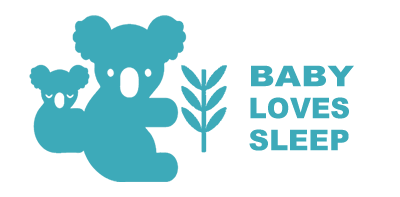Your Cart is Empty

Top Sleep Tips for Babies with Hip Dysplasia
WRITTEN BY HAILEY STUDDY, CERTIFIED SLEEP CONSULTANT AND MOM OF A PAVLIK HARNESS BABY
If you are reading this you have likely recently joined the ‘hippy’ community or have a strong inkling you may be soon. From one ‘hippy’ to another, welcome! One thing I noticed pretty quickly about this community is the supportive nature of all the strong hippy Moms and Dads.
Babies with hip dysplasia are one of a kind, they are resilient troopers. I can assure you that your little one will be absolutely fine no matter how bad things seem right now.
As a baby sleep consultant and Mom of two, I know all too well where your mind is going. How will this contraption impact my baby’s sleep? You are right to think that your baby might be a little put off by the harness but this usually only lasts 0-3 days. Babies are extremely adaptable and so long as your baby’s hip harness is fitted corrected, it will become part of their new normal.
As most adults find adjustment and change quite daunting, we often fear our babies will face the same feelings about new ways of doing things. Really, they are far less complex than us adults and as you will hear time and time again, it is worse for you than it is for your child.
Here are our top sleep tips to help you and your baby have better sleep throughout your hip dysplasia journey.
1. ENCOURAGE INDEPENDENT SLEEP ASSOCIATIONS
Your child is likely 0-3 months, which is a great time to introduce some positive sleep associations. I recommend white noise and a swaddle/sleeping bag.
Baby Loves Sleep stock a great range of hip-friendly baby sleepers as well as the Aroma Snooze Baby Sleep Aid for it's white and pink noise function.

Sleepy Hugs Extra-Wide sack baby sleepers
The Sleepy Hugs Extra-Wide Sack version is for babies that have been diagnosed with hip dysplasia or Developmental Dysplasia of the Hip (DDH), and need to wear a special brace (orthosis).
The key difference being a wider bottom sack to comfortably fit a hip dysplasia brace, Pavlik Harness, Denis Browne Brace, Rhino brace, or Spica Cast.

HELP YOUR BABY SETTLE TO SLEEP FASTER AND STAY ASLEEP LONGER
With the Aroma Snooze multi-function baby sleep aid
The world's first baby sleep aid that combines a humidifier, vaporizer, air purifier, white & pink noise, red light therapy, heartbeat sound, rain sound, lullaby and voice recorder in one compact machine.
2. CREATE A CONSISTENT SLEEP ROUTINE
If you haven't yet, it's time to establish a set of steps you follow for naptime and bedtime. Your baby thrives on predictability and consistency. Having consistent bedtime each night will also help to set your baby’s body clock and they will start to anticipate sleep time at a certain time.
Bedtimes between 6pm and 7pm compliment your baby’s circadian rhythm so from six weeks you can start bringing bedtime forward from 9/10pm to 6/7pm and this can be particularly useful for cat-nappers.
From 4 months, it is recommended that you get your baby into a nap routine also which is especially useful for babies wearing a Pavlik Harness as you may be lucky enough to be prescribed reduced hours if things are heading in the right direction. Your doctor will likely tell you to use the brace for nights and naps. If your child cat naps here and there across the day, this might get tricky.
From 4 months, your baby should be having three naps, two of these long and one shorter nap.
3. KEEP EMOTIONS SEPARATE
It is very common to feel sorry for your little one and take the slightest tear or grumble as a sign that they hate their harness. A lot of the time this isn’t the case. Don’t let those thoughts take over if you put your little one down in their crib and they start to cry. Persevere with hands on assistance and consider that they may be tired because they have been kept awake too long or have some wind. Thorough burping and a routine will help here so you know bub is comfortable and ready for sleep.
4. THE CARRIER IS YOUR FRIEND
Always consult with your paediatrician or child’s doctor as circumstances may vary, but a properly fitted baby carrier will keep your child’s hips stable and legs outward facing. If you are having a difficult day of naps, use the carrier to ensure your little one doesn’t get overtired. They will love being close to you and it's great for their hip positioning. Be sure to give your little one a top up feed before they nap.
5. SEEK HELP
If sleep deprivation is impacting your mental health there are always options. Many mother’s resort to holding their baby all night and this isn’t sustaninable long term, nor is it safe. There are so many sleep consultants offering services to help your baby get the sleep they need. Be sure to ask if they have experience with sleep dysplasia and ensure their philosophy aligns with your parenting style.
Remember, there are many parents in the same boat with the same hesitations and emotions about this unexpected journey. Finding a 'hippy' friend via online platforms or word of mouth can be highly beneficial and allows you to share experiences and keep each other motivated. You are doing a great job, Mom and Dad!
Need someone to chat to about your little one’s sleep needs?
You can reach out to our sleep consultant partner Hailey Studdy who is a certified sleep consultant and Mom of two who has been through the hip dysplasia journey with one of her own chldren.
HAILEY STUDDY
CERTIFIED BABY AND CHILD SLEEP CONSULTANT
COUNTING SLEEP BY HAILEY
@COUNTINGSLEEPBYHAILEY


















